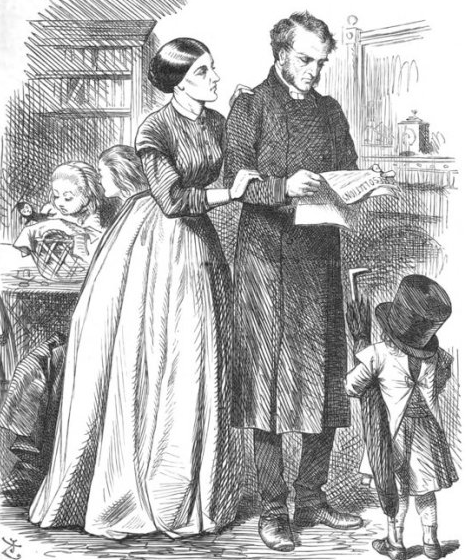Well, firstly… an interesting tale my arse. This exceedingly rare chapbook by Joseph Crawhall was published in Glasgow sometime between 1855-1860. It’s a small pamphlet of 27 pages and records a clerical tale with a clichéd formula. I’m assuming it’s incredibly rare because it was binned by any sensible Victorian reader, who after spending a penny on it, felt decidedly robbed!
The story begins by introducing Lord Belmont who has enormous wealth and a high status in society. Belmont suspects the ‘encomiums of flattery’ bestowed on him are somewhat insincere and so he feigns financial ruin to see what will happen. As one would expect from such a clichéd story, he is shunned by all his friends (except his old chum Lord Bremere). Belmont explains how he seeks a woman to marry – someone who will accept him for his character not his money. And so he leaves the metropolis wearing nothing but the garb of a rustic cottager, and assumes the grand appellation of George Trueman. He boards a stagecoach for Norwich, and continues onwards to a little village near the sea. Incidentally, he owns the village, but of course none of his tenants know him.
At the village inn he sits with the locals and listens to a conversation about the resent misfortunes of the local curate, parson Benley, who it appears is held in high approbation. It transpires that Benley is heavy in debt, and surprise, surprise, just so happens to hold the curacy gifted by Lord Belmont, and even more astonishing he has been imprisoned for his debts by the lord’s steward. It emerges the Benley owes the sum of 300 pounds. Naturally, on the following morning, our hero Lord Belfort anonymously clears the debt, and as fortune would have it, he bumps into Benley’s children (Harry and Charlotte) on his way back to the inn. When offering to carry her baskets, he becomes smitten by Charlotte’s beauty and decides he must have her for his wife.
We are now introduced to Benley who is festering away in prison. After he is given Trueman’s letter and financial aid, he kneels down to thank God for this good fortune. In the mean time Trueman on one of his evening walks espies Charlotte being harassed by his creepy steward. The scoundrel is trying to molest her, and while sneaking a kiss, he is knocked to the ground by our hero, Trueman, who pounces from a hedge. After reviving the distressed Charlotte near a stream, he declares his undying love for her. She of course cannot think of joy while her father is languishing in gaol. So what happens next? Young Harry comes running up the road with the news of Mr. Benley’s release. Trueman is invited back to the cottage and is heartily thanked for his services. He now fires his steward and promotes Benley to the vacant position. Benley cottons on to the ruse, and comparing the handwriting from his anonymous benefactor, to the handwriting from Lord Belfont’s letter, he realises they are the same. Trueman holds his hands up and admits he is Lord Belfont and the story ends in a happy marriage and joyous celebrations in the village.


